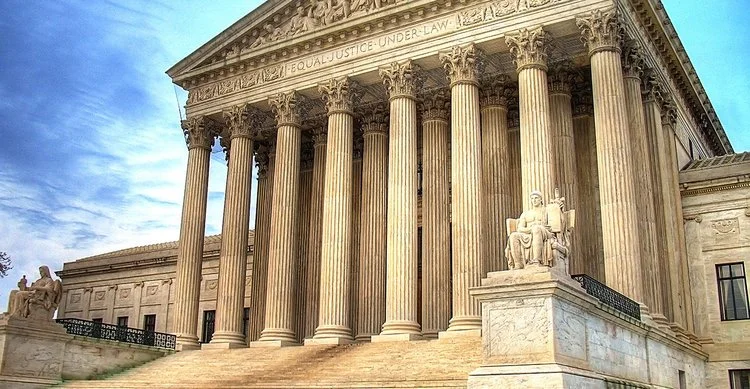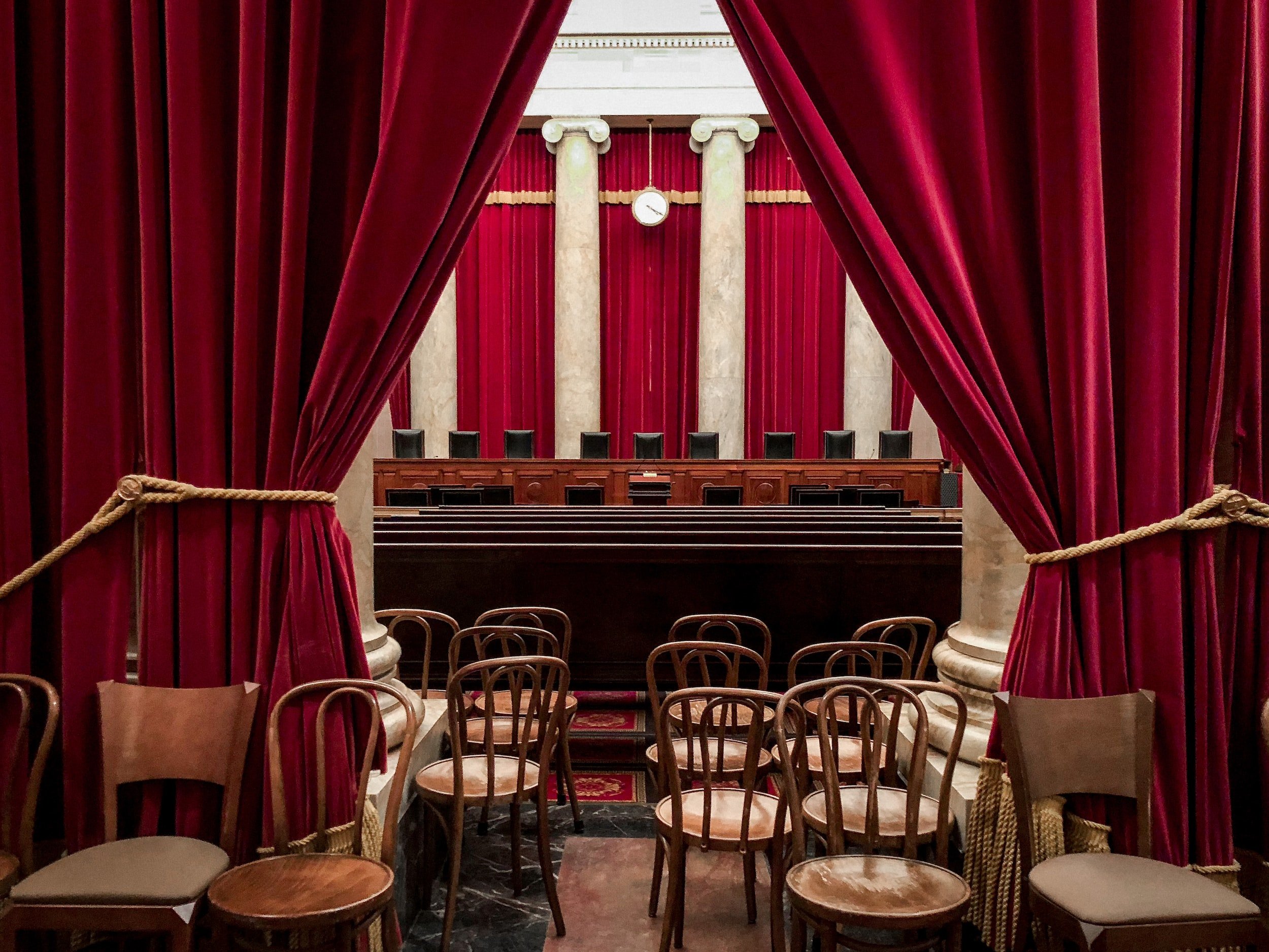Landmark Court Cases Inquiry
Each case comes with tons of visuals, videos, and information so students can learn about its constitutional connection, key facts, constitutional questions, holding, impact of case, connection to other cases, and critical questions. Each case includes a lesson, graphic organizer, and a completed rubric for teachers.
CLICK ON THE THUMBNAIL BELOW TO LEARN ABOUT EACH OF THE 14 LANDMARK SUPREME COURT CASES
Landmark Cases Rubric
Complete this graphic organizer for each case of the fourteen required landmark Supreme Court Cases.
Rank the Landmark Cases
They’re all important (that’s why we call them landmark cases), but which ones stand out at the tip top of all court cases?
Constitutional Connection
What’s the constitutional connection to each case?
Constitutional Speculation
Imagine the current Supreme Court reheard the 14 landmark cases. How would they rule, and why?
Landmark Court Case Project
Use our engaging Landmark Case project to make your court case knowledge stick
Interactive Court Cases Timeline
All the landmark Supreme Court cases in a row with essential knowledge and links.
Citizens United v. F.E.C. (2010)
Constitutional Connection
Citizens United v. Federal Election Commission, (2010), was a landmark decision of the Supreme Court of the United States regarding campaign finance laws and free speech under the First Amendment to the U.S. Constitution.
Key Facts
Citizens United sought an injunction against the Federal Election Commission in the United States District Court for the District of Columbia to prevent the application of the Bipartisan Campaign Reform Act (BCRA) to its film Hillary: The Movie. The Movie expressed opinions about whether Senator Hillary Rodham Clinton would make a good president.
In an attempt to regulate "big money" campaign contributions, the BCRA applies a variety of restrictions to "electioneering communications." Section 203 of the BCRA prevents corporations or labor unions from funding such communication from their general treasuries. Sections 201 and 311 require the disclosure of donors to such communication and a disclaimer when the communication is not authorized by the candidate it intends to support.
Citizens United argued that: 1) Section 203 violates the First Amendment on its face and when applied to The Movie and its related advertisements, and that 2) Sections 201 and 203 are also unconstitutional as applied to the circumstances.
The United States District Court denied the injunction. Section 203 on its face was not unconstitutional because the Supreme Court in McConnell v. FEC had already reached that determination. The District Court also held that The Movie was the functional equivalent of express advocacy, as it attempted to inform voters that Senator Clinton was unfit for office, and thus Section 203 was not unconstitutionally applied. Lastly, it held that Sections 201 and 203 were not unconstitutional as applied to the The Movie or its advertisements. The court reasoned that the McConnell decision recognized that disclosure of donors "might be unconstitutional if it imposed an unconstitutional burden on the freedom to associate in support of a particular cause," but those circumstances did not exist in Citizen United's claim.
Big Questions
1) Did the Supreme Court's decision in McConnell resolve all constitutional as-applied challenges to the BCRA when it upheld the disclosure requirements of the statute as constitutional?
2) Do the BCRA's disclosure requirements impose an unconstitutional burden when applied to electioneering requirements because they are protected "political speech" and not subject to regulation as "campaign speech"?
3) If a communication lacks a clear plea to vote for or against a particular candidate, is it subject to regulation under the BCRA?
4) Should a feature length documentary about a candidate for political office be treated like the advertisements at issue in McConnell and therefore be subject to regulation under the BCRA?
The proliferation of controversial political advertisements in the past decade is a direct result of the Supreme Court's 2010 Citizens United v. Federal Election Commission ruling, which helped pump billions of dollars into politics from outside sources that are supposed to be untethered from candidates or political parties.
Holding
5–4 decision for Citizens United
majority opinion by Anthony M. Kennedy
The First Amendment protects the right to free speech, despite the speaker’s corporate identity.
No. No. Yes. Yes. The Supreme Court overruled Austin v. Michigan Chamber of Commerce and portions of McConnell v. FEC. (In the prior cases, the Court had held that political speech may be banned based on the speaker's corporate identity.) By a 5-to-4 vote along ideological lines, the majority held that under the First Amendment corporate funding of independent political broadcasts in candidate elections cannot be limited. Justice Anthony M. Kennedy wrote for the majority joined by Chief Justice John G. Roberts and Justices Antonin G. Scalia, Samuel A. Alito, and Clarence Thomas. Justice John Paul Stevens dissented, joined by Justices Ruth Bader Ginsburg, Stephen G. Breyer, and Sonia Sotamayor. The majority maintained that political speech is indispensable to a democracy, which is no less true because the speech comes from a corporation. The majority also held that the BCRA's disclosure requirements as applied to The Movie were constitutional, reasoning that disclosure is justified by a "governmental interest" in providing the "electorate with information" about election-related spending resources. The Court also upheld the disclosure requirements for political advertising sponsors and it upheld the ban on direct contributions to candidates from corporations and unions.
In a separate concurring opinion, Chief Justice Roberts, joined by Justice Alito, emphasized the care with which the Court handles constitutional issues and its attempts to avoid constitutional issues when at all possible. Here, the Court had no narrower grounds upon which to rule, except to handle the First Amendment issues embodied within the case. Justice Scalia also wrote a separate concurring opinion, joined by Justices Alito and Thomas in part, criticizing Justice Stevens' understanding of the Framer's view towards corporations. Justice Stevens argued that corporations are not members of society and that there are compelling governmental interests to curb corporations' ability to spend money during local and national elections.
“Congress shall make no law respecting an establishment of religion, or prohibiting the free exercise thereof; or abridging the freedom of speech, or of the press; or the right of the people peaceably to assemble, and to petition the Government for a redress of grievances.”
Impact of case
The proliferation of controversial political advertisements in the past decade is a direct result of the Supreme Court's 2010 Citizens United v. Federal Election Commission ruling, which helped pump billions of dollars into politics from outside sources that are supposed to be untethered from candidates or political parties.
On Jan. 21, 2010, the Supreme Court ruled 5-4 that the longstanding prohibition on independent expenditures by corporations violated the First Amendment. With its decision, the court allowed corporations, including nonprofits, and labor unions to spend unlimited sums to support or oppose political candidates. The majority made the case that political spending from independent actors, even from powerful corporations, was not a corrupting influence on those in office.
Connections
With its decision, the Supreme Court overturned election spending restrictions that date back more than 100 years. Previously, the court had upheld certain spending restrictions, arguing that the government had a role in preventing corruption. But in Citizens United, a bare majority of the justices held that “independent political spending” did not present a substantive threat of corruption, provided it was not coordinated with a candidate’s campaign.
As a result, corporations can now spend unlimited funds on campaign advertising if they are not formally “coordinating” with a candidate or political party.
Since Citizens United, the Court has looked unfavorably upon limits placed upon independent campaign spending limits.
Related Cases:
Survey Question
Critical Questions
What is the Constitutional basis for the ruling in Citizens United v. FEC?
What was the most significant consequence of the ruling in Citizens United?
What other landmark cases revolve around the question of the First Amendment?
How has the Citizens United ruling impacted campaigns and American politics?
Do you agree with the Citizens United majority opinion?
How would you have ruled in Citizens United?
Now draw Citizens United! Take 10 or 20 seconds. That’s all you need. Nothing fancy. Don’t expect a masterpiece. Draw with symbols or stick figures if you wish. Now Look at your drawing. You’ve got it. That’s all.
Resources
Oyez: Citizens United v. Federal Election Commission
Bipartisan Campaign Reform Act of 2002
VOX - 50 Charts that explain money in politics
Get AP exam-ready with diagnostic tests, online review games, test review sheets, practice quizzes, full-length practice exam, and self-guided writing workshops. We'll make studying a breeze.































